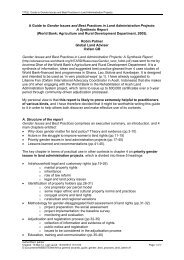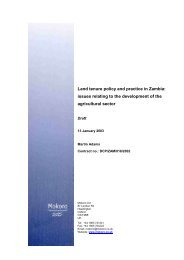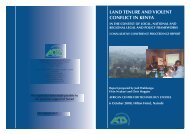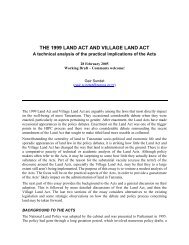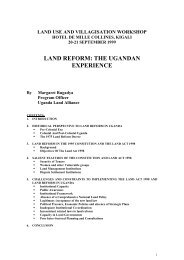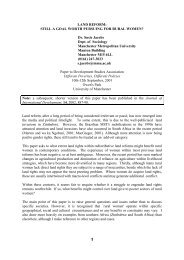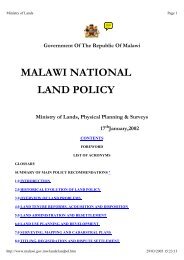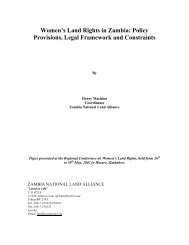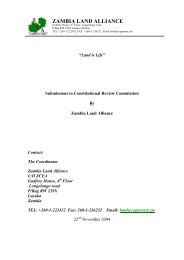Download - Mokoro
Download - Mokoro
Download - Mokoro
- No tags were found...
You also want an ePaper? Increase the reach of your titles
YUMPU automatically turns print PDFs into web optimized ePapers that Google loves.
4remains a fundamental redistribution of land ownership, and a thoroughtransformation of land use patterns in a manner that balances social andeconomic needs of society (ANC 2007:2 – emphasis added).This paper therefore explores land use and land-based livelihoods. Rather than dealingwith how land is to be acquired 1 , or the rights that those benefiting should have to theland 2 , it focuses on the question of what land reform is for, focusing on the materialchange it is to bring, while acknowledging the important symbolic functions it performs.The paper deals exclusively with the use of redistributed agricultural land, and thereforedoes not address the use of land in the communal areas – though patterns of land use inthese areas provide an indication of the types of land use prioritised by poor peopleproducing under constrained conditions (Aliber et al 2007).The core questions to be addressed in the review are: What is the range of models of land use adopted in a context of land reform? What is known about their outcomes in terms of land-based livelihoods? What is shaping these models and their outcomes? What are the dynamics in the commercial farming areas, with which new land usershave to contend? What international experiences can we learn from?The paper starts by considering the types of land use and land-based livelihoods thathave been promoted through land reform to date, and the factors that have shaped thechoices of crops, technology, and scale of operation. In reflecting on the patterns thathave emerged, it also considers what models have been marginalised, and reports onseveral innovations that have been attempted to promote land-based livelihoods andland use options suitable for the poor. These are then located within the legal and policyframeworks that guide land use, and within the context of changing dynamics in thecommercial farming sector that impinge on possibilities for successful alternatives.Looking towards alternative policy, the paper considers international experiences inrestructuring large-scale commercial farming sectors in developing countries, andelements of agrarian reform. In particular, it attends to the prerequisites for smallholderproduction – an option that, remarkably, and contrary to initial policy intentions, has beenmuch-neglected in the past 13 years of land reform in South Africa.It should be acknowledged upfront that the question of how land is to be used, and howthis use is to be organised, is a complex matter shaped by normative considerations ofwhom land reform is for. However, this question is more directly addressed in thesecond paper in this series. For the purposes of this paper, the premise is that landreform needs to accommodate a range of different needs and interests, but that the keygap is to identify land use options that can make the most significant contributiontowards poverty eradication.1 See the second paper in this series.2 See the third paper in this series.Policy Options for Land and Agrarian ReformProgramme for Land and Agrarian Studies, University of the Western Cape




